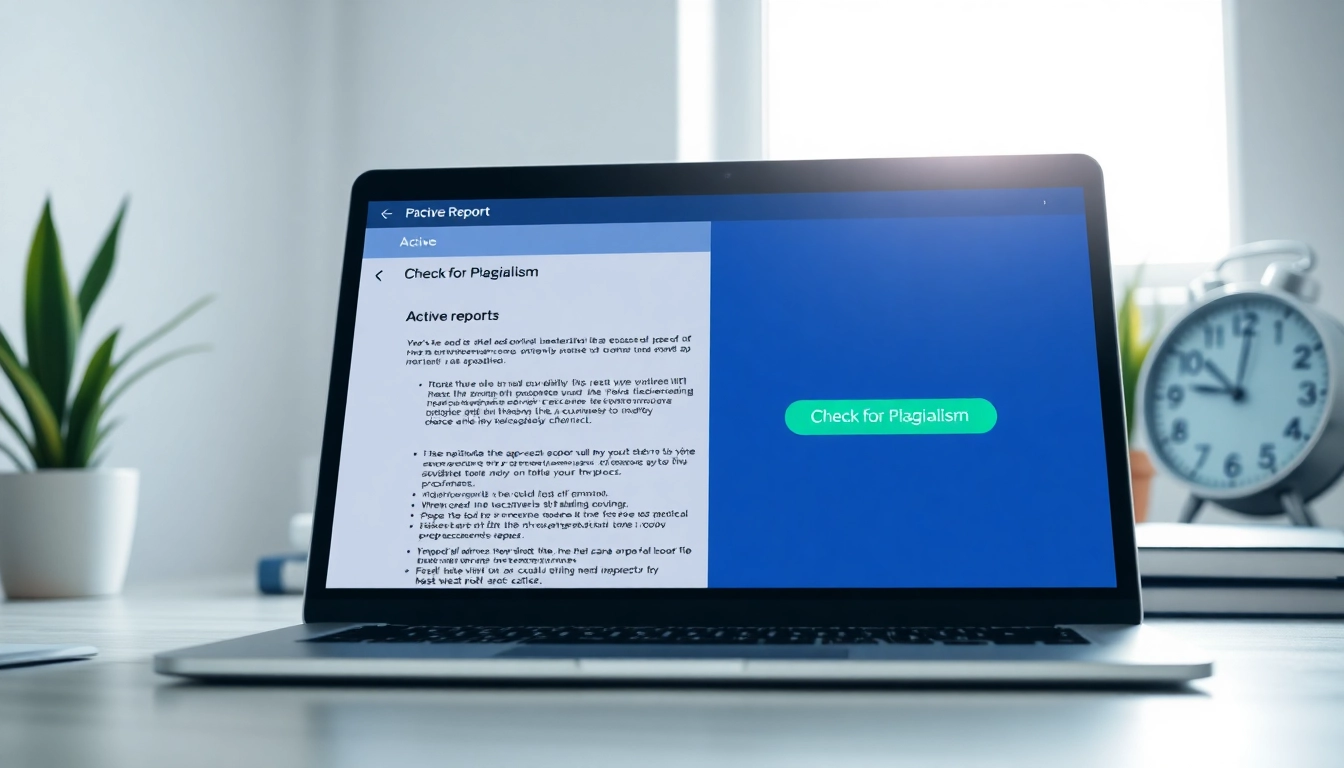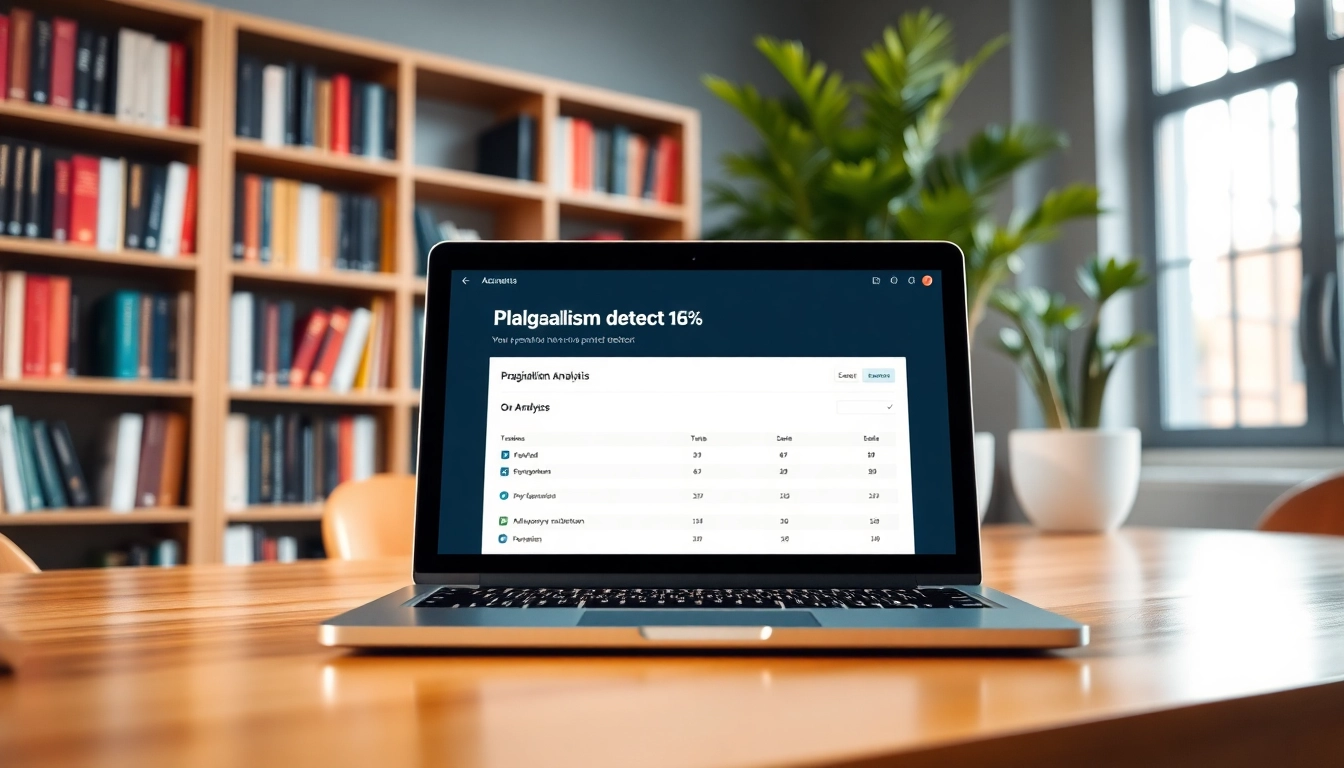Understanding Plagiarism and Its Impacts
What is Plagiarism?
Plagiarism is the act of using someone else’s work, ideas, or intellectual property without proper attribution. It can be intentional, where a writer deliberately copies content, or unintentional, where one may not fully recognize the need for proper citations. Plagiarism is not just confined to text; it can involve images, videos, and even music. Academic institutions, organizations, and content creators view plagiarism as a severe ethical and legal issue. Beyond ethical considerations, plagiarism can have serious repercussions for individuals and institutions alike.
Consequences of Plagiarism
The consequences of plagiarism can vary significantly based on the setting. In academic environments, students may face severe academic penalties, including failing grades, academic probation, or even expulsion. Professionals caught plagiarizing risk losing their jobs, which can harm their reputations and career prospects. The legal ramifications can also be serious, including copyright infringement lawsuits. Institutions may incur significant damage to their credibility if linked to incidents of plagiarism, affecting stakeholder trust and future funding opportunities.
Types of Plagiarism
Understanding the different types of plagiarism is essential to avoid it effectively. Here are the common types:
- Direct Plagiarism: Submitting someone else’s work as your own without crediting the original source.
- Self-Plagiarism: Reusing one’s previously submitted work in a new context without proper citation.
- Paraphrasing Plagiarism: Rewriting someone else’s ideas or work in your own words without crediting the source.
- Accidental Plagiarism: Unintentionally failing to cite sources correctly or performing poorly in paraphrasing.
- Patchwork Plagiarism: Combining various sources into one paper while failing to credit individual sources.
The Importance of Using a Plagiarism Checker
Why You Need a Plagiarism Checker
Employing a plagiarism checker is critical for anyone involved in writing—students, professionals, and academics alike. These tools provide an effective way to ensure originality in your work. A robust plagiarism checker can identify instances of copied content that might be overlooked during the editing process. By using these tools, writers can mitigate the risk of unintentional plagiarism, protect their integrity, and uphold the standards of their respective fields.
Benefits of Accurate Reports
Utilizing a plagiarism checker can yield several benefits:
- Comprehensive Analysis: Many plagiarism checkers use advanced algorithms to cross-reference content against a vast database of sources, offering thorough reports.
- Percentage Indicators: Most checkers provide a percentage indicating how much of the text is plagiarized, allowing writers to assess the originality of their work.
- Document Formatting Support: Many tools support various document formats, making it convenient for different writing styles and needs.
- Prevention of Future Issues: By identifying potential plagiarism before submission, writers can revise their work accordingly to maintain originality.
How a Plagiarism Checker Enhances Writing
Using a plagiarism checker can significantly enhance writing skills. Writers not only learn to avoid plagiarism but also gain insights into proper citation practices and paraphrasing techniques. The feedback from these tools can help improve their understanding of how to construct original ideas rather than relying on existing material. Moreover, by maintaining the integrity of their writing, writers bolster their credibility and reputation in their respective fields.
Choosing the Right Plagiarism Checker
Factors to Consider
Selecting the right plagiarism checker can be a daunting task, particularly with so many options available. Here are some key factors to consider:
- Database Size: A larger database often results in more accurate results. Check if the tool includes academic journals, articles, and internet resources to broaden its reach.
- Accuracy: Look for reviews and comparisons of tools to ascertain their reliability in detecting copied content.
- User Experience: The interface should be intuitive, making it easy to upload documents and interpret results.
- Cost: Many plagiarism checkers offer free versions with limited functionalities, while premium versions provide more in-depth analysis. Determine what you can afford based on your needs.
Comparison of Popular Plagiarism Checkers
To aid in your search, here are a few of the most popular plagiarism checkers, along with their key features:
| Plagiarism Checker | Key Features | Price |
|---|---|---|
| Grammarly | Integrates grammar checking, advanced suggestions, and a large database for plagiarism detection. | Starting at $12/month |
| PapersOwl | Advanced AI-powered analysis and supports various document formats. | Free |
| Duplichker | Allows simple copy-paste to check for plagiarism; generally free. | Free |
| Scribbr | Offers a university-level plagiarism check; high accuracy. | Various pricing depending on the report |
| Copyscape | Focuses on web content and offers protection against online plagiarism. | Pay-per-use |
User Feedback and Ratings
User reviews can provide invaluable insights into the usefulness and efficiency of a plagiarism checker. Platforms like Trustpilot, Capterra, and G2 contain user-generated reviews that can help gauge satisfaction. Overall ratings also give potential users an idea of how the tool performs across different use cases. Always look for tools with consistent positive feedback for reliability and trustworthiness.
How to Use a Plagiarism Checker Effectively
Step-by-Step Guide to Running a Check
Using a plagiarism checker typically follows a straightforward process. Here’s a step-by-step guide:
- Choose your plagiarism checker based on your needs.
- Create an account if required, especially for premium features.
- Prepare your text document or copy the text you want to check.
- Upload or paste the text into the tool.
- Initiate the plagiarism scan. Depending on the tool, this may take anywhere from a few seconds to a couple of minutes.
- Review the results provided by the tool, focusing on highlighted sections that indicate potential plagiarism.
- Make necessary changes or cite the original sources as needed.
Interpreting the Results
Once you receive the plagiarism report, it’s crucial to interpret the results accurately. Pay attention to the following:
- Matching Text: Review any highlighted portions of text to determine if the content needs to be reworded or properly cited.
- Source Links: The report should provide links to all the sources where matches were detected, allowing you to assess relevance.
- Percentage Score: Higher scores indicate a more significant overlap with existing content. Aim for a low percentage within an acceptable range for your work.
- Types of Matches: Some checkers categorize matches by type (e.g., URL matches, indexed publications). Understanding this can help prioritize revisions.
Improving Your Writing Based on Feedback
After reviewing the report, use the findings to enhance your writing skills. Consider the following steps:
- Revise and Edit: If any sections are flagged, rephrase them or add citations where needed.
- Learn from Your Mistakes: Keep a record of frequently flagged phrases or ideas, and find new ways to express them in the future.
- Incorporate Citations: Ensure that any referenced work is correctly cited according to the style guide you are following (APA, MLA, etc.).
- Seek Feedback from Peers: Discuss your writing with colleagues or mentors who can provide additional insights into improving originality.
Beyond Detection: Best Practices for Avoiding Plagiarism
Proper Citation Techniques
Citing sources accurately is a vital skill for any writer. Depending on the style guide you are following, cite your sources to prevent plagiarism:
- APA: Author, A. A. (Year). Title of work. Publisher.
- MLA: Author Last Name, First Name. Title of Work. Publisher, Year.
- Chicago: Author Last Name, First Name. Year. Title of Work. Publisher.
Utilize citation management tools such as Zotero or EndNote to streamline this process, especially for larger projects.
Paraphrasing and Summarizing Effectively
Paraphrasing involves rephrasing another’s ideas in your own words while preserving its original meaning. Here are tips for effective paraphrasing:
- Read the source material thoroughly before crafting your paraphrase.
- Take notes and summarize key points that resonate with your topic.
- Write your version without looking at the original source to ensure originality.
- Cross-check with the original text to confirm that you’ve captured the idea accurately without using similar phrasing.
Utilizing Writing Resources and Tools
Leverage available resources to improve your skills and reduce the risk of plagiarism:
- Writing Centers: Most universities offer writing centers where students can seek help with projects.
- Online Workshops: Participate in webinars or workshops focused on academic writing and citation techniques.
- Writing Software: Use tools like Scrivener or Microsoft Word to organize and structure your writing efficiently.
By seeking resources that promote ethical writing, you not only improve your work’s quality but also foster a culture of originality in your field.



